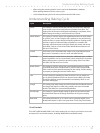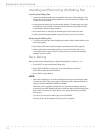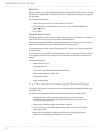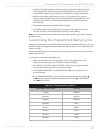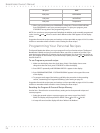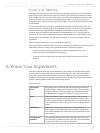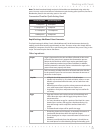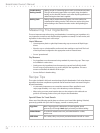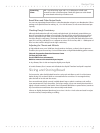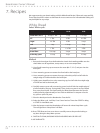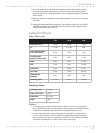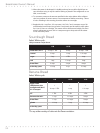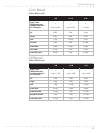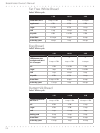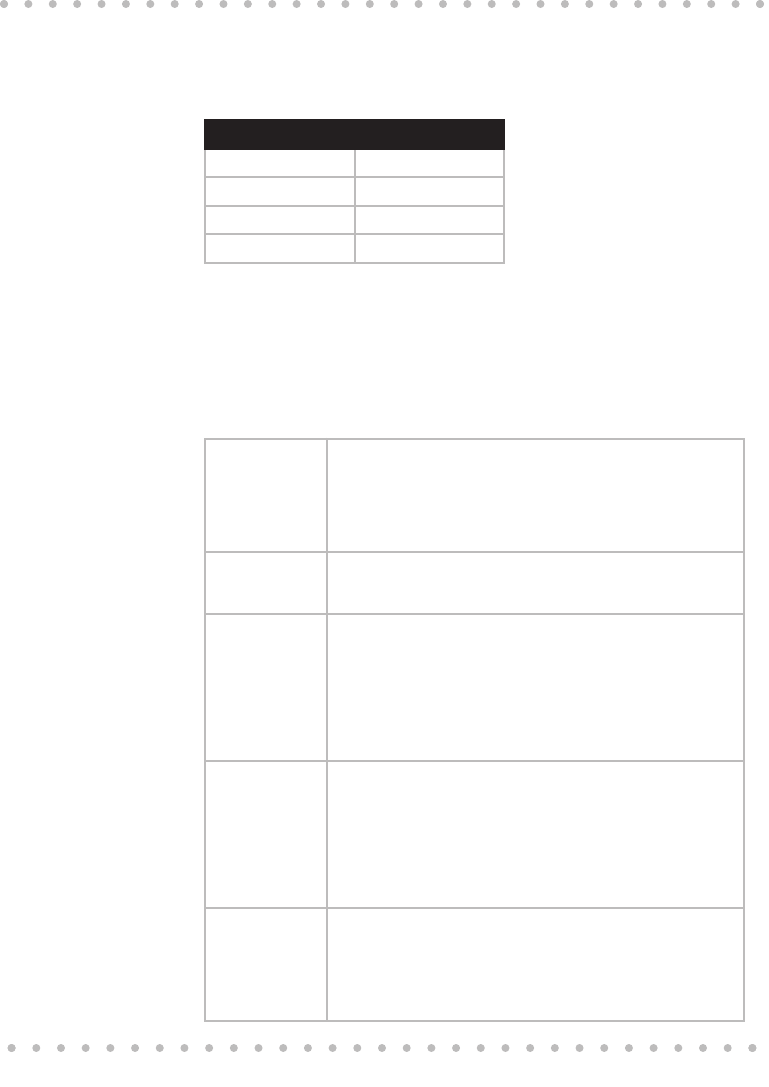
29
Working with Yeast
Note: The basic bread and dough recipes in this booklet were developed using active dry
yeast. You may use the chart below to substitute any quick-acting yeast (quick rise, fast rise or
Breadmaker yeast) for the active dry yeast or vice versa.
Conversion Chart for Quick-Acting Yeast
Active Dry Yeast Quick Acting Yeast
1 teaspoon = teaspoon
1- teaspoons = 1 teaspoon
2- teaspoons 1- teaspoons
1 tablespoon = 2 teaspoons
Rapid Settings Additional Yeast Amounts:
The Rapid settings for White, French, Whole Wheat and Fruit & Nut decrease the time for
making your favorite bread by approximately an hour. Choose a recipe, then simply ADD an
additional teaspoon of active dry or quick-acting yeast, whichever one you are using, to the
recipe. The bread may be shorter and denser.
Other Ingredients
Sugar Sugar is important for the color and flavor of breads. It also serves
as food for the yeast since it supports the fermentation process.
Recipes in this book that call for sugar require granulated sugar.
Do not substitute powdered sugar unless indicated. In addition,
artificial sweeteners cannot be used as a substitute for sugar as the
yeast will not react properly with them.
Salt Salt is necessary to balance the flavor of breads and cakes. Salt lim-
its the growth of yeast. Do not increase or decrease the amount of
salt shown in the recipes.
Liquids
• All liquids should be warm, 80º F/27º C, for all recipes.
• Liquids, such as milk (1%, 2%, whole and skim), water or a com-
bination of powdered milk and water, can be used when mak-
ing bread.
• Milk will improve flavor, provide a velvety texture and soften the
crust, while water alone will produce a crispier crust.
• Vegetable or fruit juices and potato water may be used for fla-
vor variety.
Eggs
• Eggs add richness and a velvety texture to bread dough and
cakes. When the recipe calls for egg(s): bring them to room
temperature first.
• You may substitute an egg for a portion of the liquid in a yeast
bread recipe: crack any size egg into a liquid measuring cup,
then add enough water to equal the amount listed in the
recipe.
• The Batter Bread recipes call for specific size eggs.
Fats
• Shortening, butter and oil shorten, or tenderize, the texture of
yeast breads. Breads that call for fat stay fresh longer.
• French bread gets its unique crust and texture from the lack of
fat added.
• If butter is used directly from the refrigerator, it should be cut
into small pieces for easier blending during the kneading cycle.



